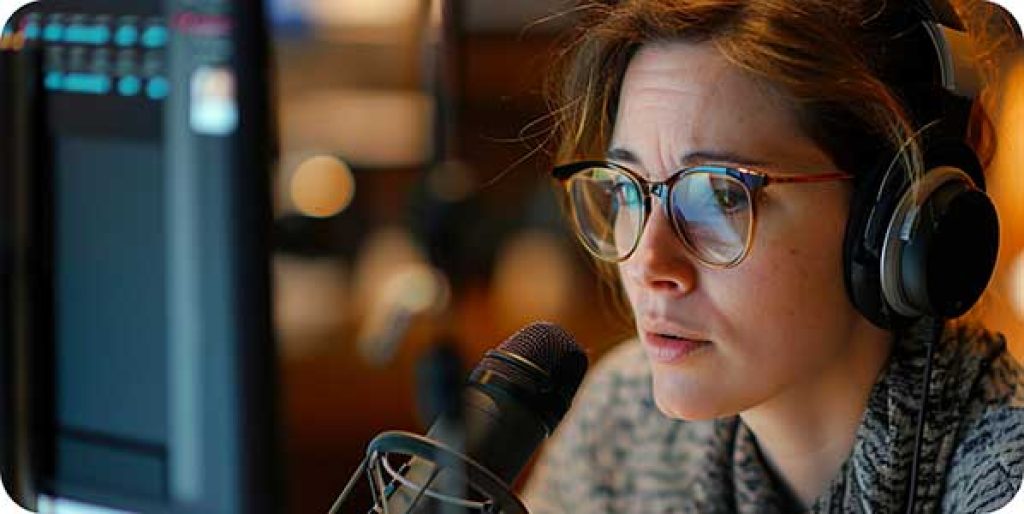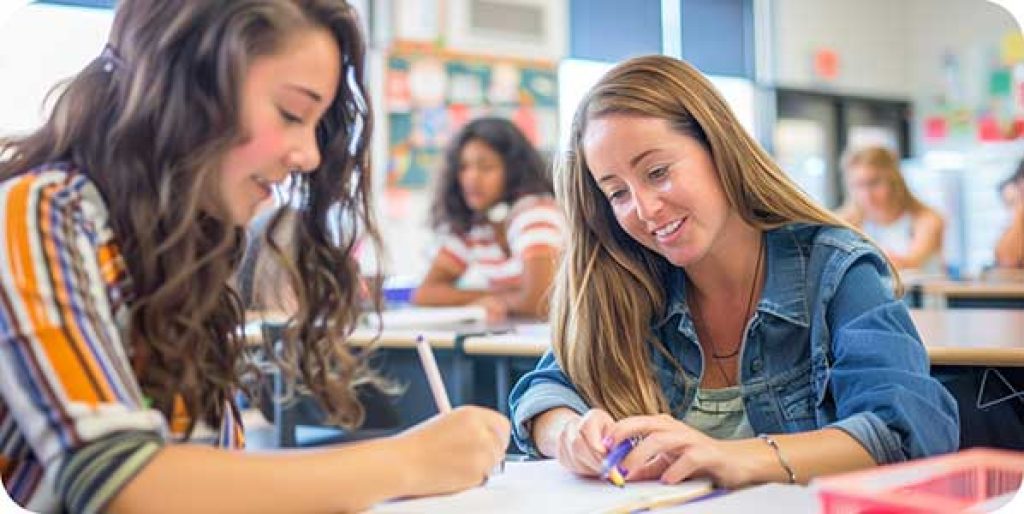Orthographic Dyslexia & Dysgraphia
Tech-Based Support For Learning Differences In The Digital Era
Dyslexia and dysgraphia are distinct and separate learning differences. People with dyslexia can struggle with reading fluency and accuracy. Dysgraphia is a difficulty in spelling and writing coherently. Depending on the type and severity of dyslexia or dysgraphia affecting the individual, different aspects of reading and writing may be impacted.
What Is Orthographic Dyslexia?
Orthographic dyslexia is a specific learning disability (SLD) that affects an individual's ability to recognize words by sight, making it difficult to spell and read quickly. It impacts the ability to connect letters and their corresponding sounds with the visual patterns that make up spelling and word formation. With orthographic dyslexia, the reading trouble occurs in the part of brain-based word processing where human cognition decodes and encodes words verbally and visually. That is, these brains cannot easily store and retrieve words based on sounds matched with appearance; people with orthographic dyslexia may not recognize words by sight. The orthographically dyslexic brain’s memory, much like a computer’s working memory, runs into obstacles when faced with this specific task.
Definition: Orthography
The word orthography, which may not be a familiar word to many, relates to writing a language.
It can refer either to the system of spelling and other conventions used to write a particular language, or to the study of writing systems as a whole.
Orthographic study examines how written symbols such as letters relate to the sounds of a spoken language, and comparing the relative complexity of spelling systems between different languages.
In English, the way we spell words often doesn’t match how the words sound. This is because English as we know it today has evolved over centuries, incorporating words and usages from other languages, and the spelling has not always kept up with changes in pronunciation.
Orthographic dyslexia goes beyond difficulty with phonics or sounding out words. People with this condition may struggle to recognize written words automatically. This can lead to slow reading speed, difficulty with spelling consistency (the same word being spelled differently each time), and issues with silent letters (e.g., “knight”).
A core challenge in orthographic dyslexia is processing and memorizing the visual patterns of words. This can make it difficult to instantly recognize familiar words or learn new sight words.
Regardless of the language the person speaks, orthographic dyslexia will involve trouble decoding written words into sounds, and vice versa. It’s a translation and transmission processing issue.

What Is Dysgraphia?
Dysgraphia impacts the physical act of writing; it primarily affects a person's handwriting ability and fine motor skills, making the act of writing laborious and often resulting in illegible or disorganized text. Individuals with dysgraphia may have difficulty forming letters, organizing written thoughts, or maintaining a clearly legible handwriting style.
Dysgraphia isn't just messy handwriting. While weak fine motor skills can cause poor writing, dysgraphia is more than a muscular issue. Similar to dyslexia, it's linked to working memory problems. Individuals with dysgraphia struggle with orthographic coding. This means they have trouble remembering and using written words while writing them down. This makes it hard for them to plan how to move their fingers to form letters. They can't easily predict the next hand movement needed without looking at what they're writing.
For comparison, people without dysgraphia can connect sounds to letters, and picture words in their head, making writing much easier. This breakdown in orthographic coding is different from a developmental fine motor disorder, another cause of messy writing, although the two are often confused. People with dysgraphia may struggle with:
Fine Motor Skills
Trouble making the precise movements required to form letters.
Spelling & Grammar
Difficulty applying spelling rules and proper grammar structures.
Organizing Written Thoughts
Putting ideas down on paper in a clear and sequential manner.
Dysgraphia and dyslexia challenges can affect both children and adults. In children, they may lead to frustration, difficulty keeping up with peers, and a reluctance to engage with reading and writing activities. Children may struggle with learning to read and write, which will be likely to affect their academic progress. Adults with dyslexia and dysgraphia may face challenges in work settings that require proficient writing and reading skills, or strong written comxmunication abilities.
Where Do Dyslexia & Dysgraphia Come From?
If dyslexia or dysgraphia has appeared suddenly in an adult, this may be the result of a brain injury or a part of aging-related cognitive decline. However, in adults who have had trouble with reading and writing all their lives, but who were simply never diagnosed in their childhood or adolescence, these reading and writing disorders follow the typical pattern and are based on individual brain development differences or genetically inherited predispositions.
It must be noted that these conditions do not impact intelligence, and people with orthographic dyslexia, dysgraphia, or any other type of reading and writing disability may in fact be highly intelligent and creative. Rather, these are simply differences in how individuals process written language.

Diagnosis & Assessment For Dyslexia Or Dysgraphia
Diagnosing dyslexia and dysgraphia typically involves a multi-step process. Psychologists, educational specialists, and speech-language pathologists may be involved. Assessments often include:
Standardized Tests
These measure how the person’s reading, writing, and spelling skills compare to benchmarks.
Informal Observations
Educators or specialists may meet with the person, and observe their writing process and reading fluency.
Interviews
Gathering information about the individual's history, academic performance, and challenges faced.
Co-occurring Cognitive & Learning Disabilities
It's important to understand that dyslexia and dysgraphia can co-occur with other, related cognitive, learning and spelling disabilities, which can impact various aspects of learning and daily functioning. One such condition is dyscalculia, which is a difficulty with understanding and processing numbers. People with dyscalculia may struggle with basic math operations, counting, understanding mathematical concepts, and applying math in real-life situations. Like dyslexia and dysgraphia, dyscalculia does not reflect an individual's overall intelligence but rather indicates a difference in how their brain processes numerical information.
The co-occurrence of these conditions can compound challenges in academic and professional settings. Recognizing and addressing the comprehensive needs of individuals who face multiple learning disabilities is essential for providing effective support and accommodations. This approach considers all aspects of a person's cognitive differences, and with these in mind, offers a pathway to greater success and inclusion in various aspects of life.
Understanding and Accommodating Dyslexia & Dysgraphia
Recognizing and understanding orthographic dyslexia and dysgraphia is crucial for creating inclusive environments in education, work, and daily life. Effective support and accommodations can significantly improve quality of life and opportunities for individuals with these conditions.
Digital & Physical Accessibility Tools For Dyslexia & Dysgraphia
Web and digital accessibility refers to the design of websites, digital documents, and software applications so they can be used by people with all types of disabilities, including learning disabilities like orthographic dyslexia and dysgraphia. The implementation of text-to-speech functions, alternative text descriptions, and the ability to customize font sizes and styles for better readability are all part of web and digital accessibility, ensuring websites, online documents, and digital interfaces are usable by everyone. Web accessibility widgets can be a helpful way to get started with ensuring that your content is usable by everyone. For those with dyslexia and dysgraphia, features like dyslexia-friendly font options and built-in spell checkers can significantly improve their online experience. In digital educational settings, teachers can implement assistive technologies to support students with learning differences.
In physical spaces and interactions, accommodations might include providing notes in advance, allowing for verbal rather than written responses, or using speech-to-text technology. In educational and business environments, these supports offer individuals with orthographic dyslexia and dysgraphia equal access to information, opportunities to participate fully in educational programs, and the ability to perform up to their potential in the workplace. In physical spaces, clear signage, uncluttered layouts, and access to assistive technologies can make a big difference. Similarly, during social interactions and civic engagement, providing materials in alternative formats (e.g., audio recordings) and allowing for flexible communication methods can allow for greater participation. By recognizing and addressing these challenges, we can create a more equitable and inclusive world for everyone, where every individual has the tools and opportunities to succeed.
Treatment & Assistive Strategies for Dyslexia and Dysgraphia
There are various approaches to helping individuals with dyslexia and dysgraphia manage learning or career tasks:
- Specialized Tutoring
Working with a qualified tutor trained in learning differences can provide targeted instruction and strategies. For instance, a tutor might use multisensory techniques to help a student with dyslexia learn sight words. - Multisensory Instruction
This approach engages multiple senses to reinforce learning, helping students connect letters and sounds through visual, auditory, and kinesthetic methods. For example, tracing letters with sandpaper while saying their sounds can benefit some dyslexic learners. - Technology Aids & Assistive Tools
Technological advancements offer a range of helpful aids and tools designed to support individuals with learning disabilities. For example, assistive writing programs can provide spelling suggestions and grammar checks for those with dysgraphia and other reading and writing disabilities. Other tools include:
- Text-to-Speech
Text-to-speech software can read aloud digital text for people with orthographic dyslexia. - Speech-to-Text
Speech-to-text software allows individuals with dysgraphia to articulate their thoughts verbally. By transcribing these words into written text, it bypasses difficulties with handwriting. - Reading Apps
Certain apps are designed to support reading development. Some offer customizable font sizes, spacing, and backgrounds to reduce visual stress for readers with orthographic dyslexia. - Organizational Tools
Tools and apps that assist with organization and time management can help individuals manage their workload more effectively, compensating for difficulties in planning and sequencing. - Personalized Learning Strategies
Developing effective personalized learning strategies can aid individuals in overcoming challenges with reading and writing. For someone with dysgraphia, employing dictation software and graphic organizers might help structure thoughts and ideas more effectively, and improve written organization.
- Text-to-Speech

The Importance Of Support
Beyond specific treatment or assistive tools, techniques and technology approaches, human support is critical:
Educator Support
Educators who understand dyslexia and dysgraphia can implement classroom accommodations such as allowing extra time for tests or providing alternative assignments.
Parental / Caretaker Support
For young learners, this support is vital: building a positive home learning environment, advocating for the child at school, and emphasizing effort and progress.
Peer Support
Gathering information about the individual's history, academic performance, and challenges faced.
By combining effective treatment strategies with ongoing support from educators, parents, and peers, individuals with dyslexia and dysgraphia can achieve their full potential, with successful learning, career and life skills outcomes.

Inclusivity Best Practices For Web Accessibility
In today's digital world, web accessibility is one of the most important ways to offer equitable access to information and opportunities. For individuals with dyslexia and dysgraphia, accessible websites can open doors to learning, working and social engagement. Some recommendations for making digital content more accessible include:
Offering Accessibility For Online & Digital Content
When web and software designers, developers and administrators implement the best practices below, they offer more equitable access to their content for people with disabilities:
- Text-to-Speech Software
This technology allows users to have digital text read aloud, removing the barrier of decoding written text for people with dyslexia. Included in this software category are screen readers, which are also often used by people who are blind or visually impaired. - Font Adjustments
Allowing users to adjust font size, style, and spacing can significantly enhance readability for those with dyslexia. Fonts designed for dyslexia, such as those with weighted bottoms, can help in reducing the inversion and rotation errors common in dyslexia. As a general rule, clear, legible sans-serif fonts like Arial or Helvetica are easier to read on-screen, especially for people with dyslexia. Adjustable font size and spacing also offers users a way to customize their reading experience for optimal comfort. - Clear, Concise Language
Using straightforward, concise language helps in making digital content more accessible. Breaking down complex ideas into simpler, more digestible parts can help everyone, especially those with learning differences that may affect reading, in understanding and retaining information. - Structured Layouts and Navigation
Organizing content with clear headings, bullet points, and short paragraphs makes navigation easier. Consistent, predictable website navigation helps people find information without becoming overwhelmed. - Contrast and Color Options
Providing options to adjust the background and text colors can reduce visual stress and improve text legibility. High contrast between text and background is important for general readability, while certain color combinations can work better specifically for people with dyslexia.

Providing Alternative Digital Input Methods
Giving users options that allow them to enter data and text responses in the ways that work best for them is an important part of providing accessibility online:
- Speech-to-Text Technology
When users can dictate text instead of typing it, it reduces the burden of written expression for those with dysgraphia and any other disability affecting writing. - Digital Note-Taking Tools
Many digital note-taking apps offer features like voice recording and mind-mapping, which can be helpful for capturing ideas and organizing thoughts for people with dysgraphia.
Implementing these recommendations and technologies can make a significant difference in the accessibility of digital content for individuals with orthographic dyslexia and dysgraphia, as well as other cognitive and physical disabilities and impairments, helping create an inclusive and equitable digital environment.
The Real-Life Impact of Dyslexia and Dysgraphia
For individuals with dyslexia and dysgraphia, the challenges can extend beyond academics, significantly affecting various aspects of their lives:
Academic Performance
Struggles with reading fluency and written expression can impact grades and test scores, causing frustration and a sense of falling behind. With reading and writing more time-consuming and challenging, these conditions can lead to difficulties keeping up with peers, lower grades, and unhappiness with schoolwork.
Self Esteem
Difficulty with reading and writing can affect self-confidence and motivation. Negative experiences in school can lead to a reluctance to engage with learning activities. Embarrassment about their difficulties may cause decreased participation in class or social engagement.
Daily Life
Dysgraphia can make tasks like filling out forms or taking notes difficult and time-consuming. Reading difficulties can create barriers to accessing information or enjoying leisure reading. Everyday tasks that require reading and writing, like navigating websites, filling out forms, or sending emails, can become daunting, affecting personal and professional life.
Coping Mechanisms And Success Stories
Despite the challenges, many people with dyslexia and dysgraphia thrive in school, work, and life. Here are some coping mechanisms to help support their success:
- Early Diagnosis & Intervention
Getting support early can make a significant difference in a person's learning journey. Look for the signs associated with some of the more common learning disabilities, and then have the child evaluated. - Finding The Right Tools
Technological advancements offer a range of assistive tools for individuals with dyslexia and dysgraphia. - Supportive Surroundings
Understanding from educators, parents, and peers is an essential part of creating a positive environment. Create a supportive atmosphere where challenges can be discussed openly, reducing stress and anxiety. - Personalized Learning
Implement personalized learning strategies and seek specialized tutoring that better serves individual needs. - Inspire & Admire
Share success stories of individuals who have navigated similar challenges, highlighting diverse paths to success and the importance of persistence and creativity. People need to hear that they can succeed.
Indeed, many successful people have dyslexia or dysgraphia. A recent study found that individuals with dyslexia can demonstrate exceptional creative problem-solving abilities. This ability may not be inherent but rather it is created by a need to function well without skills used by others, such as writing easily and reading fluently. To coin a phrase, necessity is the mother of creative inventiveness. Whatever the source of the creativity that has been correlated to learning differences, real success stories highlight the importance of recognizing that dyslexia and dysgraphia are not indicators of intelligence or potential. For people with dyslexia and dysgraphia, and for their educators, families, and work colleagues, it is important to remember that individuals with these conditions possess unique strengths and can achieve their goals with the right strategies and support.
Creating Confidence: The Power of Accessibility
Learning disabilities can create obstacles, but they don't define a person's potential. By creating inclusive learning environments and embracing accessible technologies, we can empower individuals with dyslexia and dysgraphia to achieve their full potential. Ultimately, a society that that values the well-being and success of all its members, one that considers the needs of everyone, is stronger and more vibrant. Prioritizing the implementation of inclusive design principles in education and technology help lay the groundwork for a future where everyone has the tools they need to learn, grow, and contribute, where progress is measured not just by technological advancements but by our ability to understand and uplift each other.
FAQs
Yes, both conditions can be identified in adults. Dyslexia and dysgraphia are lifelong conditions, and adults may not have been diagnosed in childhood. Many adults realize they have these learning disabilities after observing similar challenges in their children or learning about the symptoms. If you suspect you may have one of these conditions, talking to a healthcare professional is a good first step.
There is no cure for dyslexia or dysgraphia, but there are effective strategies that can significantly improve reading, writing, and spelling skills. While the core challenges remain, with proper support and intervention, children with dyslexia and dysgraphia can develop strong literacy skills and reading fluency.
Absolutely! Dysgraphia primarily affects the physical act of writing, not creativity or storytelling ability. Many successful writers have dysgraphia and utilize assistive technologies like speech-to-text software to craft their work.
Yes, some individuals may also have dyscalculia, which affects their ability to understand numbers and perform math calculations, in addition to their reading and writing challenges.
Employers can offer accommodations like flexible work arrangements, access to technology aids, and alternative formats for documentation to support their employees effectively.









